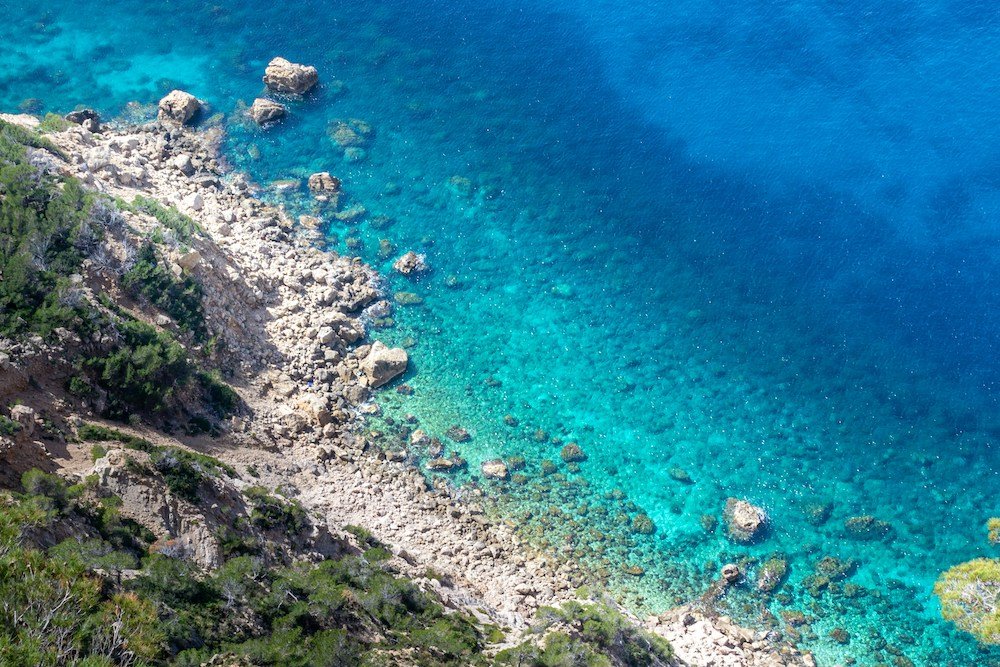
Want to have a Mallorca travel guide at your fingertips and discover the best things to do?
Nestled in the azure waters of the Mediterranean, Mallorca stands as a beacon of beauty, culture, and adventure.
This Balearic Island, the largest in its archipelago, captivates the hearts of travelers with its diverse landscapes, from the rugged Serra de Tramuntana mountains to the serene sandy beaches that dot its coastline.
A rich tapestry of history and modernity, Mallorca offers a unique blend of ancient charm and contemporary luxury, making it a must-visit destination on any travel enthusiast’s list.
Mallorca, often spelled Majorca, is more than just a sun-and-sand destination; it’s an island that boasts an impressive cultural heritage, with Palma de Mallorca, its bustling capital, at the heart of its allure.
The island’s varied geography includes picturesque villages, olive groves, and hidden coves, each with its own story to tell.
From the stunning architecture of the Palma Cathedral to the winding trails of the Tramuntana, Mallorca invites exploration and discovery.
As a travel destination, Mallorca holds a special place in the Mediterranean tourism landscape.
Its ability to offer something for everyone makes it uniquely appealing.
For the adventure seekers, the Tramuntana mountains provide endless hiking and cycling opportunities.
Beach lovers are spoilt for choice with over 200 beaches, ranging from secluded bays to vibrant beach clubs.
Cultural enthusiasts will find solace in the island’s many museums, historic sites, and galleries, not to mention the rich culinary scene that reflects Mallorca’s diverse cultural influences.
Moreover, Mallorca’s significance extends beyond its physical beauty and recreational offerings.
It is a hub for sustainable tourism, with numerous initiatives aimed at preserving its natural and cultural assets for future generations.
The island’s commitment to sustainability enhances its appeal, drawing travelers who are conscious of their environmental impact.
In crafting this Mallorca Travel Guide, we delve into the heart of what makes Mallorca a premier travel destination.
From practical travel tips to insights into the island’s hidden gems, this guide is your comprehensive companion to discovering the enchanting island of Mallorca.
Getting to Mallorca
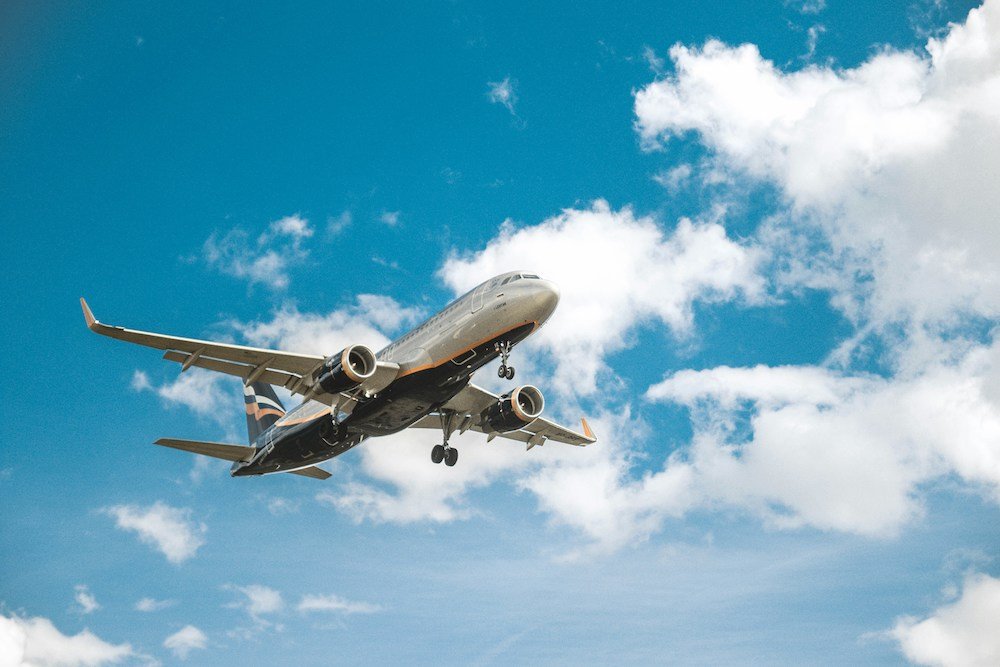
Mallorca’s allure as a premier Mediterranean destination is matched by its accessibility from various points across the globe.
Whether you’re contemplating the skies or the seas, reaching this island paradise is a journey worth taking.
Here’s your essential guide to air and sea travel options for your upcoming Mallorca adventure.
Air Travel Information
Main Airports
The gateway to Mallorca by air is the Palma de Mallorca Airport (PMI), situated just 8 kilometers east of the capital, Palma.
As the third largest airport in Spain, PMI serves millions of passengers each year, connecting Mallorca to major cities across Europe and offering seasonal flights to and from destinations worldwide.
Tips for Booking Flights
- Early Booking: To secure the best deals on flights to Mallorca, plan and book your tickets well in advance, especially if you’re traveling during the peak summer months.
- Compare Airlines: Utilize flight comparison websites to find the most competitive rates and direct flight options. Low-cost carriers often have great deals, but make sure to check baggage allowances.
- Flexibility: If possible, be flexible with your travel dates. Mid-week flights can be cheaper than weekend flights, and flying during shoulder seasons (spring and autumn) can significantly reduce costs.
- Airline Alerts: Sign up for airline newsletters and fare alerts. Airlines often announce special offers and last-minute deals to their subscribers.
Sea Travel Options
For those who prefer the romance and scenic views of sea travel, Mallorca is well-connected by ferries from mainland Spain and other Balearic Islands.
From Mainland Spain
- Barcelona, Valencia, and Denia: These are the primary ports on the Spanish mainland offering ferry services to Mallorca. The journey from Barcelona to Palma can take anywhere from 7 to 8 hours, making it a popular overnight option. Valencia and Denia offer quicker routes but are farther south.
- Booking Tips: As with air travel, booking your ferry tickets in advance can help you snag the best prices. Consider cabin options for overnight journeys to ensure a comfortable trip.
From Other Islands
- Inter-Island Travel: Regular ferry services also connect Mallorca with its sister islands, Menorca, Ibiza, and Formentera. These short hops are perfect for day trips or island-hopping adventures, with journeys typically lasting between 2 to 4 hours.
- Flexibility and Offers: Keep an eye out for special promotions and flexible ticket options, especially if you plan to explore multiple islands. Some ferry companies offer passes that allow for multiple trips at a reduced rate.
Reaching Mallorca, whether by air or sea, is an integral part of your travel experience.
By planning ahead and considering your preferences and budget, you can choose the best option that adds to the excitement and ease of your journey.
With the island’s stunning landscapes and vibrant culture waiting to be explored, getting to Mallorca is just the beginning of your unforgettable adventure.
Best Time to Visit
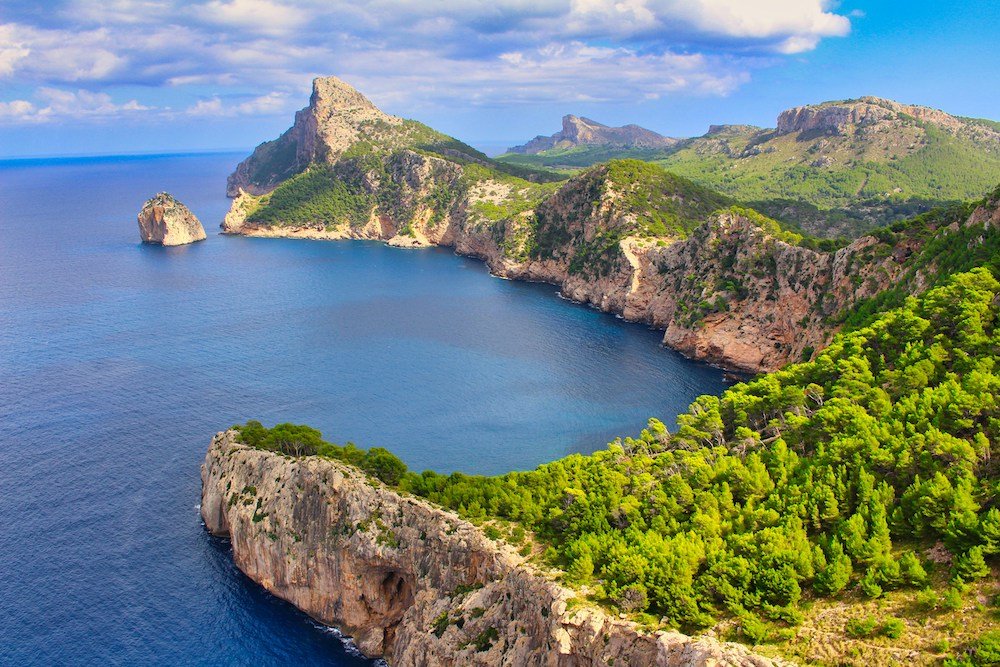
Mallorca’s Mediterranean charm is year-round, but the island truly comes alive between the mild winters and the warm, vibrant summers.
Understanding the climate and seasonal variations can help you choose the ideal time for your visit, whether you’re seeking a beach getaway, an adventure in the mountains, or a cultural experience during one of the island’s many festivals.
Overview of the Climate and Seasonal Variations
Mallorca experiences a typical Mediterranean climate, characterized by hot, dry summers and mild, wet winters.
Summer months, from June to August, see average temperatures ranging from 25°C to 30°C (77°F to 86°F), making it perfect for beach activities and water sports.
Winter, from December to February, brings cooler weather with temperatures averaging between 8°C to 15°C (46°F to 59°F), ideal for exploring the island’s interior and cultural sites without the summer crowds.
Spring (March to May) and autumn (September to November) are transitional seasons, offering a pleasant climate with fewer tourists.
These seasons are characterized by milder temperatures, blooming landscapes in spring, and a warm sea still enjoyable in the fall.
Recommendations on the Best Time of Year to Visit for Different Activities
- Beaches: The best time for a beach holiday in Mallorca is during the summer months when the weather is warm, and the sea temperature is inviting. July and August are the peak tourist seasons, so consider June or September for a more tranquil experience with equally favorable weather.
- Hiking: For outdoor enthusiasts, the best times to visit are spring and autumn. The temperatures during these months are ideal for hiking and exploring the Serra de Tramuntana mountain range without the intense heat of the summer. The landscapes are particularly stunning in spring when the island is green and flowers are in bloom.
- Festivals: Mallorca hosts numerous festivals throughout the year, offering insights into the island’s rich culture and traditions. Notable events include the Sant Joan festival in June, celebrating the summer solstice with bonfires and fireworks, and the Sa Pobla potato festival in July, showcasing local cuisine. For cultural experiences, plan your visit around these events to enjoy Mallorca’s festive spirit.
- Off-Peak Travel: For those seeking solitude and the opportunity to experience Mallorca’s local life without the crowds, winter is an ideal time. You can enjoy the island’s natural beauty, with cooler weather perfect for long walks and sightseeing. Additionally, off-peak travel often comes with the benefit of lower accommodation prices.
Choosing the right time to visit Mallorca depends on your interests and what you wish to get out of your vacation.
Whether it’s basking in the summer sun, embarking on scenic hikes, or immersing yourself in local festivals, Mallorca offers a wealth of experiences throughout the year.
Where to Stay
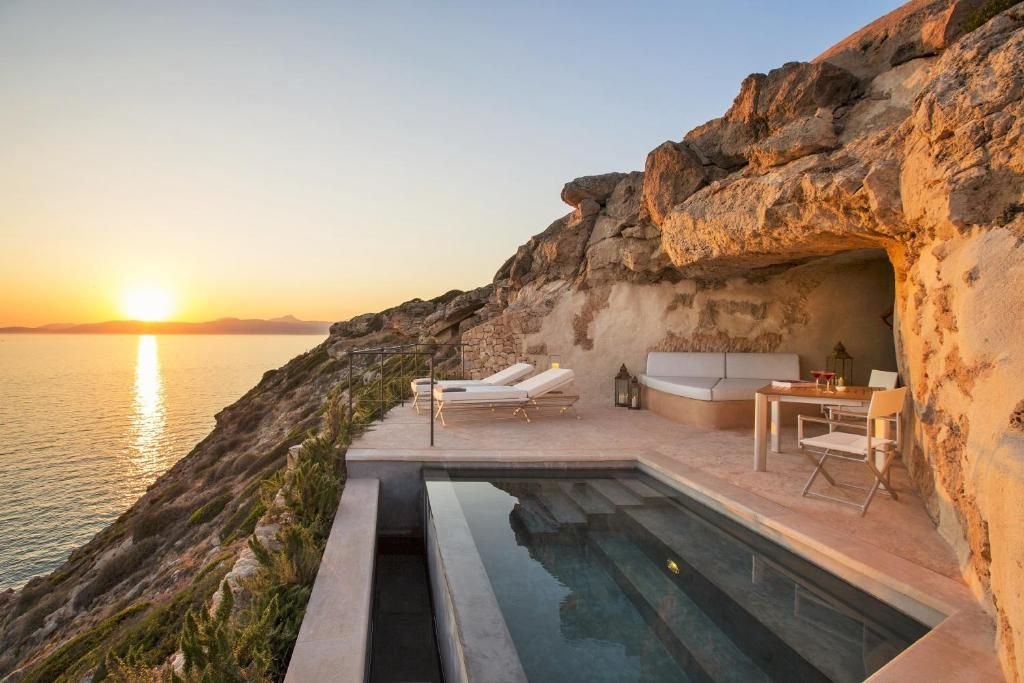
Mallorca’s wide array of accommodation options caters to every taste and budget, from luxury resorts nestled along the coastline to charming budget hotels in the heart of its historic villages.
Whether you’re looking for a lavish retreat, a family-friendly base, or a cozy spot for solo exploration, Mallorca has something to offer.
Overview of Accommodation Options
- Luxury Resorts: Mallorca is home to some of the most exquisite resorts in the Mediterranean, offering unparalleled service, stunning sea views, and top-notch amenities. These resorts often feature spa services, gourmet restaurants, and private beaches, ensuring a stay filled with relaxation and indulgence.
- Budget Hotels: For travelers keeping an eye on their expenses, Mallorca’s budget hotels are a great choice. Located both in urban areas and smaller towns, these hotels provide comfortable accommodations without the hefty price tag. They are perfect for those who plan to spend most of their time exploring the island.
- Vacation Rentals: For those seeking a home-away-from-home experience, vacation rentals across Mallorca offer the privacy and flexibility of your own space. From beachfront villas to cozy apartments in the city, rentals are ideal for longer stays and for travelers who prefer to cook their own meals or want extra space.
Recommendations for Different Types of Travelers
- Families: Look for family-friendly resorts or vacation rentals that offer multiple bedrooms and kid-friendly amenities like pools, playgrounds, and activity clubs. Areas like Alcúdia and Cala d’Or are renowned for their family-oriented accommodations and beaches with shallow waters perfect for young swimmers.
- Couples: Couples may enjoy boutique hotels or intimate vacation rentals that offer a romantic setting. Consider staying in a secluded villa in the Tramuntana mountains or a charming hotel in Palma’s old town, where you can enjoy candlelit dinners and stunning sunsets.
- Solo Travelers: For those traveling solo, staying in a hostel or a budget hotel in Palma or Sóller offers the chance to meet fellow travelers and access communal spaces. Solo travelers might also prefer accommodations that offer guided tours or activities to explore the island with a group.
- Groups: Large groups or friends traveling together can find great value in vacation rentals, where everyone can stay under one roof. Look for villas or large apartments with enough bedrooms and communal areas to socialize. Some properties even offer amenities like private pools, barbecue areas, and spacious terraces.
Cultural Highlights
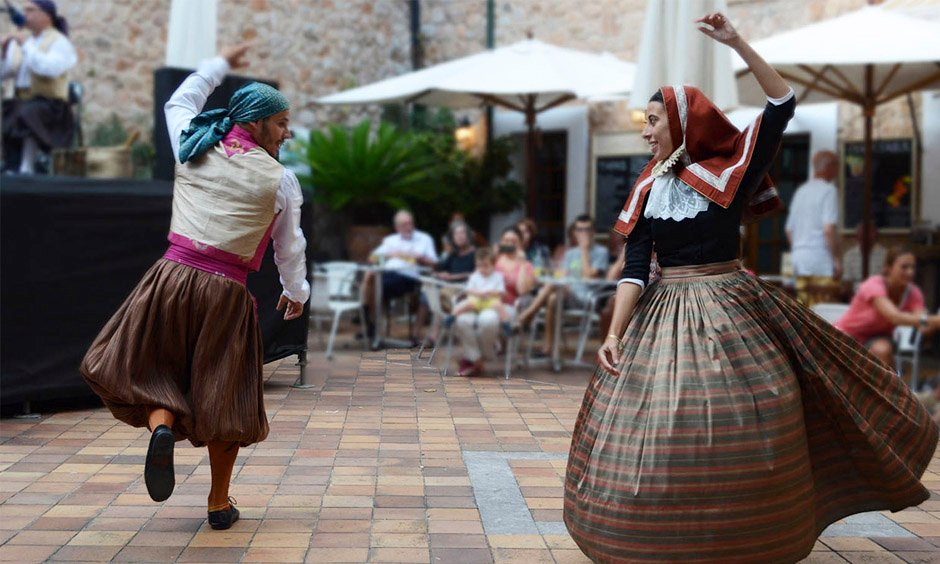
Mallorca’s culture is a vibrant blend of its historical layers, from the remnants of ancient civilizations to its modern-day vibrancy.
This island not only promises sun-soaked beaches but also a deep dive into a rich historical and cultural heritage that awaits discovery.
History of Mallorca
The history of Mallorca is a fascinating journey through time, starting from the Talayotic period, evident in the prehistoric settlements scattered across the island.
It has seen the influence of various cultures and civilizations, including the Romans, Moors, and eventually the Crown of Aragon.
Each era has left its mark on the island, contributing to the rich cultural tapestry that defines Mallorca today.
The island’s strategic position in the Mediterranean has made it a coveted jewel throughout history, influencing its architecture, language, and customs.
Cultural Landmarks and Heritage Sites
- Palma Cathedral (La Seu): A masterpiece of Gothic architecture, the cathedral dominates the Palma skyline. Its construction started in the 13th century and it stands as a symbol of the island’s Christian reconquest.
- Bellver Castle: Overlooking Palma from a hilltop, this 14th-century circular castle offers panoramic views and a glimpse into Mallorca’s medieval past.
- Almudaina Palace: Adjacent to Palma Cathedral, this royal palace was originally a Moorish fort and serves as a testament to the Islamic influence on the island.
- Valldemossa Charterhouse: Nestled in the Tramuntana mountains, this historic monastery is famous for its association with Chopin and George Sand, who spent a winter here. The idyllic village of Valldemossa is itself a cultural treasure.
Museums and Art Galleries
- Es Baluard Museum of Modern and Contemporary Art: Located in Palma, this museum houses an impressive collection of Spanish and international contemporary art, showcasing works from the 20th and 21st centuries.
- Fundació Miró Mallorca: Celebrating the work of Joan Miró, the museum offers a look into the artist’s studio and a vast collection of his works, providing insight into his creative process.
- Pollentia Archaeological Site: Near Alcúdia, this site allows visitors to explore the remains of a Roman city, including a theater, residential district, and forum, offering a window into ancient Roman life on the island.
Natural Wonders
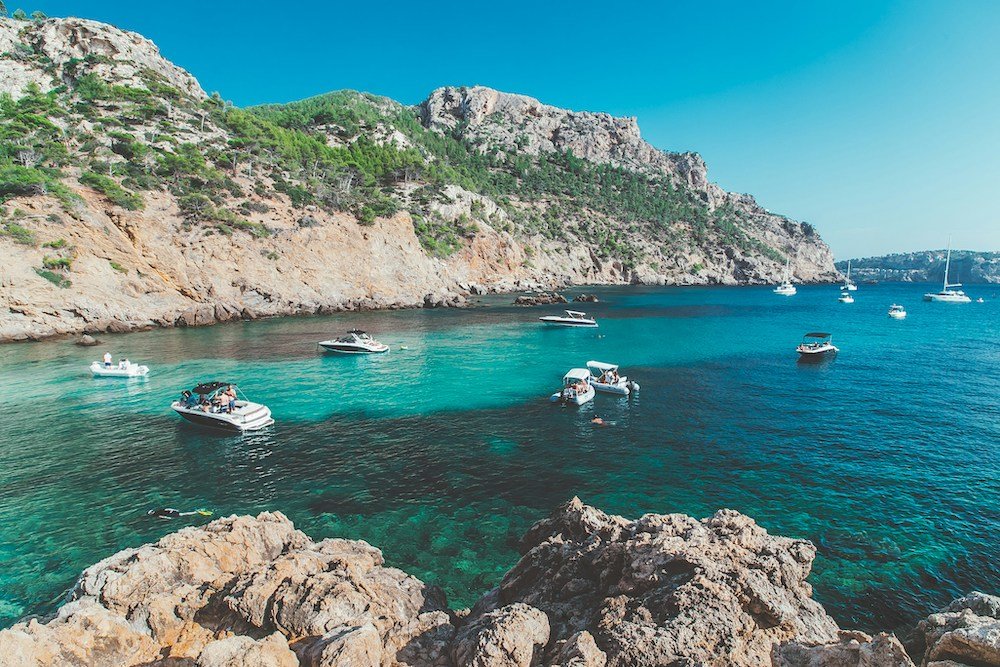
Mallorca’s natural landscape is a treasure trove of beauty, offering everything from serene beaches and secluded coves to majestic mountains and enchanting caves.
Each of these natural wonders presents a unique opportunity to connect with nature and experience the island’s beauty firsthand.
Beaches and Coves
Mallorca boasts more than 200 beaches, ranging from long stretches of white sand to hidden coves accessible only by foot or boat.
The crystal-clear waters of the Mediterranean make these beaches ideal for swimming, snorkeling, and sunbathing.
Among the most famous is Es Trenc, known for its Caribbean-like feel with turquoise waters and fine sand.
For those seeking tranquility, Cala Varques offers a secluded beach experience, surrounded by natural cliffs and lush vegetation.
Mountains and Hiking Trails (Mention of Serra de Tramuntana)
The Serra de Tramuntana, a UNESCO World Heritage site, is the backbone of Mallorca, stretching from the southwest to the northeast of the island.
This mountain range is a paradise for hikers and outdoor enthusiasts, offering a wide array of trails that range from easy walks to challenging treks.
The mountains not only provide breathtaking panoramic views of the island and the sea but also house charming villages like Valldemossa and Deià, where the blend of nature and culture creates a magical atmosphere.
Caves and Natural Parks
Mallorca’s underground world is just as fascinating as its surface, with numerous caves that offer a glimpse into the island’s geological past.
The Caves of Drach, located on the east coast, are among the most visited, featuring one of the largest underground lakes in the world, Lake Martel.
Visitors can enjoy a boat ride on the lake and listen to live classical music, making for a truly unforgettable experience.
In addition to its caves, Mallorca is dotted with natural parks that protect the island’s diverse ecosystems.
The Mondragó Natural Park, situated in the southeast, is a haven for birdwatchers and nature lovers, with its pristine beaches, crystal-clear coves, and Mediterranean forests.
It’s an excellent spot for hiking, bird watching, and enjoying the untouched beauty of Mallorca’s coastline.
Gastronomy
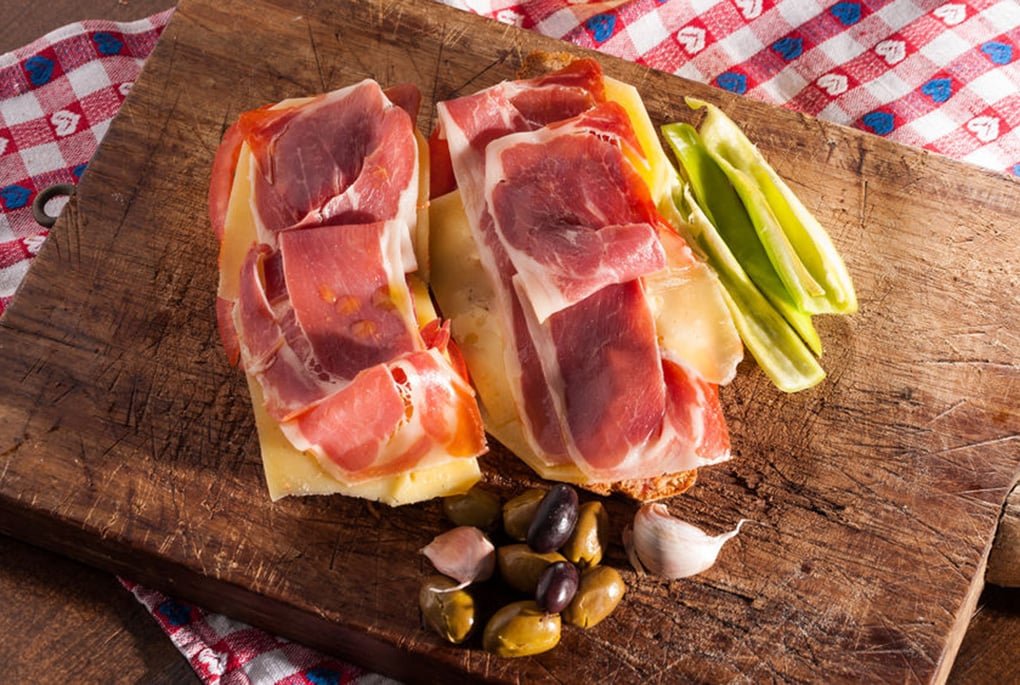
Mallorca’s gastronomy is a reflection of its cultural diversity and rich agricultural heritage, offering a palette of flavors that range from the sea to the mountains.
The island’s cuisine is deeply rooted in Mediterranean traditions, emphasizing fresh, local ingredients like olive oil, seafood, vegetables, and fruits.
With every dish, there’s a story, a tradition, or a local secret waiting to be discovered.
Overview of Mallorcan Cuisine
Mallorcan cuisine is characterized by its simplicity and the quality of its ingredients.
The island’s location in the Mediterranean has fostered a culinary tradition that heavily features seafood, alongside pork and lamb dishes, fresh vegetables, and fruits.
Bread and olive oil form the base of many meals, accompanied by local cheeses and sobrasada, a typical Mallorcan cured sausage.
Desserts often incorporate almonds and oranges, two of the island’s staple crops.
Must-try Dishes and Local Delicacies
- Pa amb Oli: A simple yet iconic dish, consisting of rustic bread rubbed with ripe tomatoes, drizzled with local olive oil, and topped with ham, cheese, or sobrasada.
- Tumbet: A delightful summer dish featuring layers of fried potatoes, aubergines, and red bell peppers, topped with a tomato garlic sauce.
- Sobrasada: This soft, spreadable sausage made from pork and paprika is a Mallorcan staple and is often eaten with local bread.
- Ensaimada: A sweet, spiral-shaped pastry dusted with powdered sugar, often filled with cream or sweet pumpkin, making it a perfect souvenir or breakfast treat.
- Frito Mallorquín: A traditional fry-up of pork or lamb with potatoes, onions, and various local vegetables, seasoned with fennel and other herbs.
Recommendations for Restaurants and Food Markets
Mallorca’s dining scene ranges from rustic family-run cellers serving traditional dishes to Michelin-starred restaurants offering modern interpretations of local cuisine.
For an authentic experience, visit Celler Sa Premsa in Palma for classic Mallorcan dishes in a traditional setting.
Es Pati in Sant Llorenç des Cardassar offers a more contemporary take on local ingredients in a charming, intimate atmosphere.
Food markets are a great way to immerse yourself in the local culinary culture.
Mercat de l’Olivar and Mercat de Santa Catalina in Palma are bustling hubs where locals shop for fresh produce, meats, and seafood.
These markets also have tapas bars and stalls where you can sample local delicacies and freshly prepared dishes.
Activities and Experiences
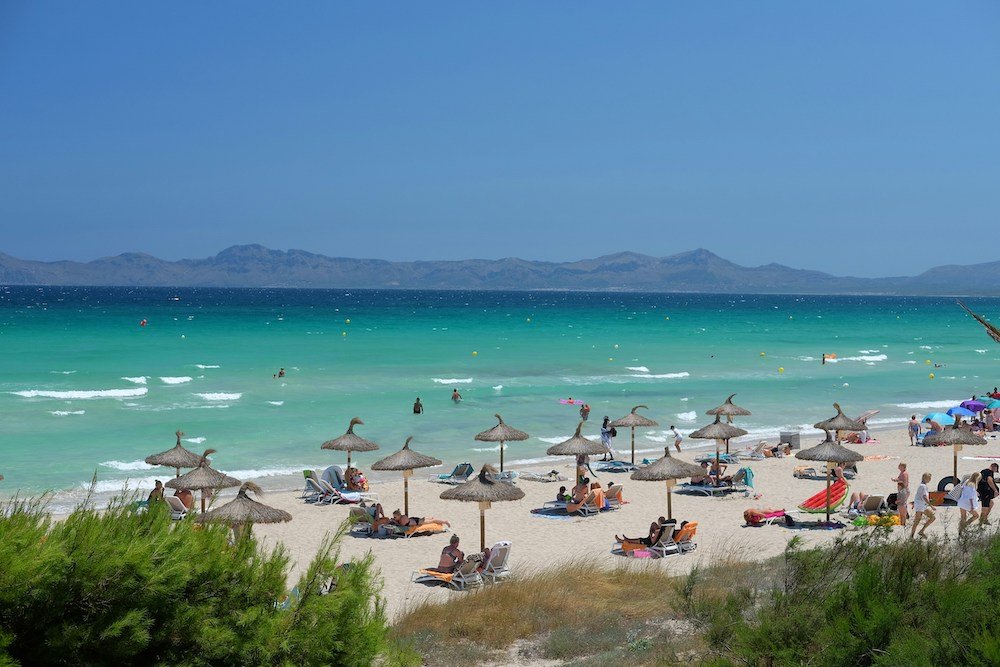
Whether you’re drawn to the crystal-clear waters of the Mediterranean, the rugged trails of the Serra de Tramuntana, or the serene ambiance of a spa, Mallorca provides an exceptional setting for engaging in a wide range of activities. Let’s explore what the island has to offer.
Water Sports and Activities
Mallorca’s extensive coastline and clear waters make it a haven for water sports enthusiasts.
- Sailing: With numerous marinas and sailing schools, the island is perfect for both experienced sailors and novices looking to learn. The calm waters of the bay of Palma offer ideal conditions for sailing, with boat rentals and guided tours available.
- Snorkeling: The clear waters around Mallorca are home to a diverse marine life, making it a fantastic place for snorkeling. Cala Mondragó and the marine reserve around the Malgrats Islands are particularly popular for their vibrant underwater ecosystems.
- Kayaking: Explore Mallorca’s coastline from a different perspective by kayaking its clear waters. Paddle around secluded coves, under natural arches, and into hidden caves. Rentals and guided tours are available, suitable for all skill levels.
Land Activities
Mallorca’s varied landscapes provide a stunning backdrop for a range of land-based activities.
- Cycling: The island is a renowned cycling destination, offering routes for all levels, from leisurely rides along the coast to challenging climbs in the Tramuntana mountains. Bike rentals and guided tours are widely available.
- Hiking: Mallorca’s hiking trails take you through some of the island’s most beautiful and untouched landscapes. The GR221, or “Dry Stone Route,” is a long-distance trail that traverses the Tramuntana, offering breathtaking views and a deep connection with nature.
- Golf: With over 20 golf courses, Mallorca is a golfer’s paradise, boasting well-maintained courses designed to complement the natural beauty of their surroundings. Many offer spectacular views of the mountains or the sea.
Wellness and Relaxation
For those seeking a more tranquil experience, Mallorca offers numerous opportunities for wellness and relaxation.
- Spa Treatments: Indulge in pampering spa treatments at one of Mallorca’s luxury resorts or wellness centers. From massages and facials to hydrotherapy and aromatherapy, the focus is on relaxation and rejuvenation.
- Yoga Retreats: The island’s serene beauty makes it an ideal setting for yoga retreats. Whether you’re a beginner or an experienced practitioner, yoga retreats in Mallorca offer a chance to deepen your practice in peaceful surroundings, often with breathtaking views.
Nightlife and Entertainment
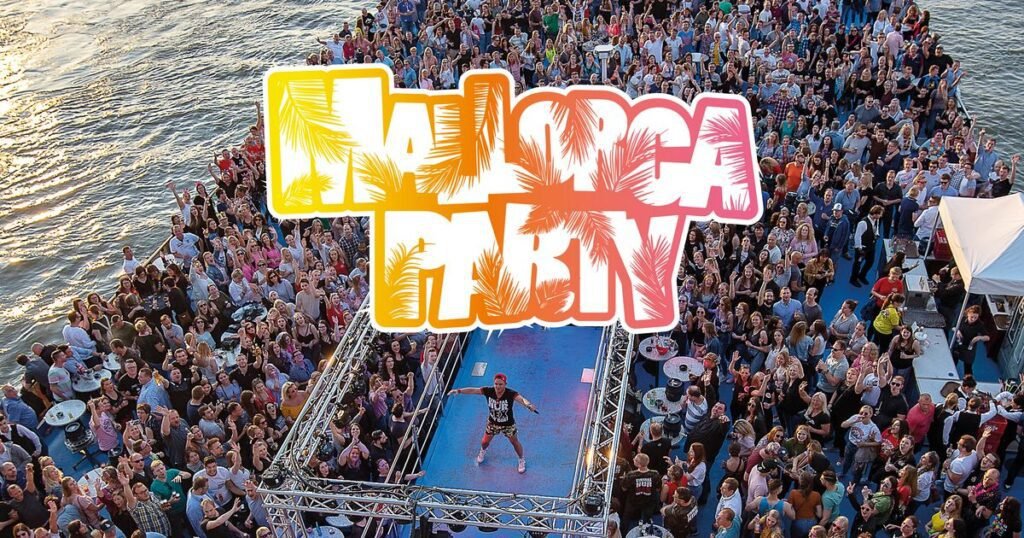
As the sun sets, Mallorca transforms, offering a variety of nighttime entertainment options.
Whether you’re in the mood for a quiet drink under the stars, an evening of dancing, or immersing yourself in local culture through events and festivals, the island has plenty to offer.
Overview of Nightlife in Mallorca
- Bars: From chic rooftop bars in Palma offering panoramic views of the city and the sea to quaint beachfront establishments where you can enjoy a cocktail with your feet in the sand, Mallorca’s bar scene is as diverse as its landscapes. Many small towns and villages also boast charming local bars, perfect for enjoying a nightcap and mingling with the locals.
- Clubs: Those looking for a more energetic nightlife experience will find a selection of clubs in Mallorca, especially in Palma and the Magaluf area. These clubs attract international DJs and offer a vibrant scene for dancing until dawn.
- Beach Parties: For a truly unique experience, attend one of Mallorca’s beach parties. These events combine the natural beauty of the island’s beaches with music and dancing, creating an unforgettable atmosphere under the stars.
Cultural Events and Festivals Worth Attending
Mallorca’s cultural calendar is filled with events and festivals that showcase the island’s traditions, history, and artistic talent.
- Sant Joan (St. John’s Eve): Celebrated on June 23rd, this festival marks the beginning of summer with bonfires, fireworks, and beach parties. The night is magical, with a mix of ancient rituals and modern celebrations.
- Fira del Ram: A spring fair held in Palma, featuring amusement rides, food stalls, and games. It’s a fun event for families and anyone looking to experience local festivity vibes.
- Sa Rua: A carnival event that takes place before Lent, featuring colorful parades, elaborate costumes, and lively music throughout the streets of Palma and other towns across the island.
- Nit de l’Art: Palma’s art night, celebrated in September, when galleries and museums open their doors late into the night, offering a unique cultural experience with art installations, performances, and parties.
Shopping
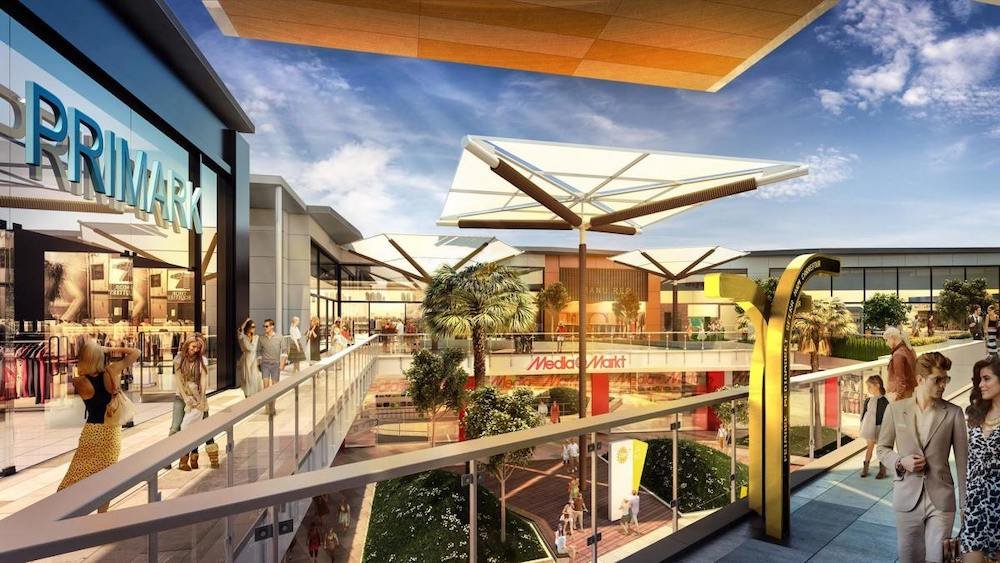
Mallorca offers a shopping experience as diverse as its landscapes, blending traditional craftsmanship with modern retail.
Whether you’re looking for high-end fashion, unique local crafts, or the freshest produce, the island’s markets, boutiques, and shopping centers provide a wealth of options to explore.
Best Places for Shopping
- Local Markets: For a taste of local life, the markets of Mallorca are not to be missed. Mercat de l’Olivar and Mercat de Santa Catalina in Palma offer everything from fresh produce to seafood, meats, and cheeses, along with stalls selling flowers, spices, and local delicacies. For artisan crafts and souvenirs, the weekly market in Sineu, one of the oldest on the island, is a treasure trove of local products.
- Boutiques: Palma is home to numerous boutiques offering a mix of international brands and local designers. The areas around Passeig del Born and Avenida Jaime III are particularly known for their exclusive shops selling fashion, jewelry, and accessories. For unique Mallorcan designs, explore the boutiques in the old town and the Santa Catalina district.
- Shopping Centers: For a more conventional shopping experience, Mallorca’s shopping centers, such as Porto Pi Centro Comercial near Palma’s waterfront and FAN Mallorca Shopping on the outskirts of the city, offer a wide range of international and Spanish brands, along with cinemas, restaurants, and entertainment options.
Local Products and Souvenirs to Bring Home
- Leather Goods: Mallorca is famous for its high-quality leather products, including shoes, bags, and jackets. The town of Inca, in particular, is known as the island’s leather capital, hosting several outlets and factories.
- Pearls: While not naturally occurring, Mallorca’s artificial pearls are renowned for their quality and beauty. Visit one of the pearl factories or shops to find exquisite jewelry pieces.
- Ceramics: The traditional ceramics and pottery from Mallorca, with their distinctive designs and colors, make for beautiful home decor or gifts. The town of Pòrtol is famous for its pottery workshops.
- Local Food Products: Olive oil, local wines, ensaimadas (sweet pastries), and sobrasada (Mallorcan sausage) are excellent souvenirs for foodies, reflecting the island’s culinary heritage.
Practical Information
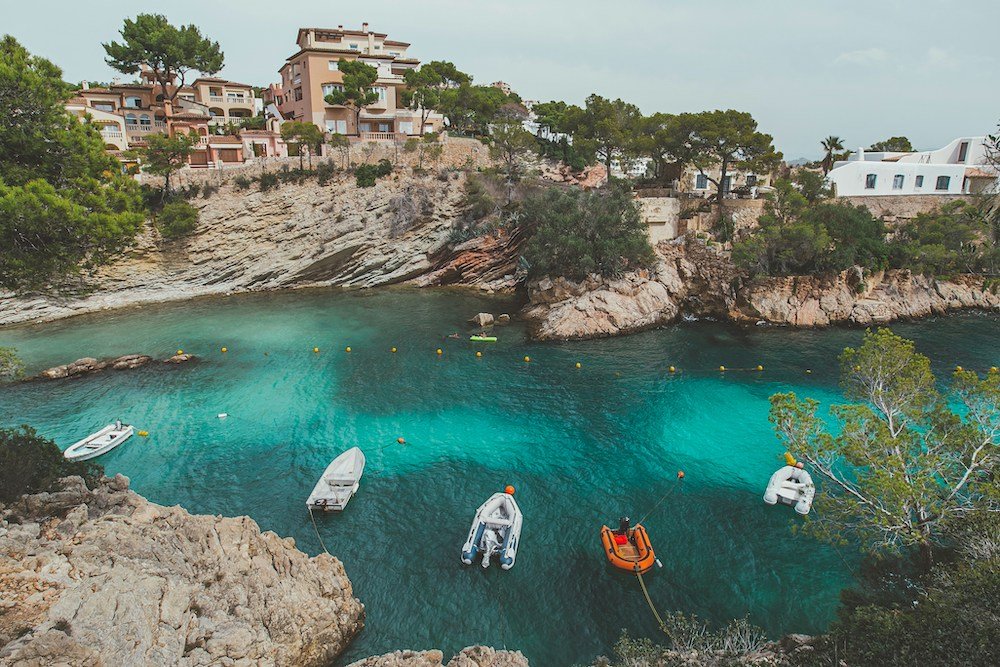
Navigating your way around Mallorca and interacting with locals is an important part of your travel experience.
Here’s what you need to know to make your stay smooth and enjoyable.
Language and Communication
- Language: Spanish is the official language of Mallorca, with Catalan (specifically the Balearic dialect) also widely spoken. English is commonly used in tourist areas, hotels, and restaurants, but learning a few basic phrases in Spanish or Catalan can enhance your experience and is greatly appreciated by locals.
- Communication: Wi-Fi is readily available in hotels, cafes, and public areas, making it easy to stay connected. Consider purchasing a local SIM card for mobile data if you need connectivity on the go.
Currency and Payment Options
- Currency: The currency used in Mallorca, as in the rest of Spain, is the Euro (€). ATMs are widely available, and credit/debit cards are accepted in most places, including restaurants, shops, and hotels.
- Payment Options: While cash is still used, especially in smaller establishments and markets, card payments and contactless methods (including mobile payments) are increasingly common. It’s a good idea to carry some cash for small purchases.
Transportation within the Island
- Car Rental: Renting a car is one of the best ways to explore Mallorca, offering the freedom to visit remote beaches and mountain villages. International and local rental agencies are available at the airport and in major towns.
- Public Transportation: Mallorca’s public transport system includes buses and trains, connecting Palma with major towns and tourist attractions. The TIB (Transport de les Illes Balears) website provides routes, schedules, and fare information.
- Biking: With its scenic landscapes and dedicated bike lanes in urban areas, biking is a popular and eco-friendly way to explore Mallorca. Bike rentals are available across the island.
Safety Tips and Healthcare Facilities
- Safety Tips: Mallorca is generally a safe destination for travelers. Common sense precautions should be taken, especially in crowded tourist areas, to guard against petty theft. Always be aware of your surroundings and secure your belongings.
- Healthcare Facilities: The healthcare system in Spain is excellent, with public and private hospitals and clinics throughout Mallorca. Pharmacies are widely available and can provide assistance with minor ailments. Travelers from the EU should bring their European Health Insurance Card (EHIC) for access to public healthcare services. Non-EU travelers should ensure they have adequate travel insurance.
Day Trips and Excursions
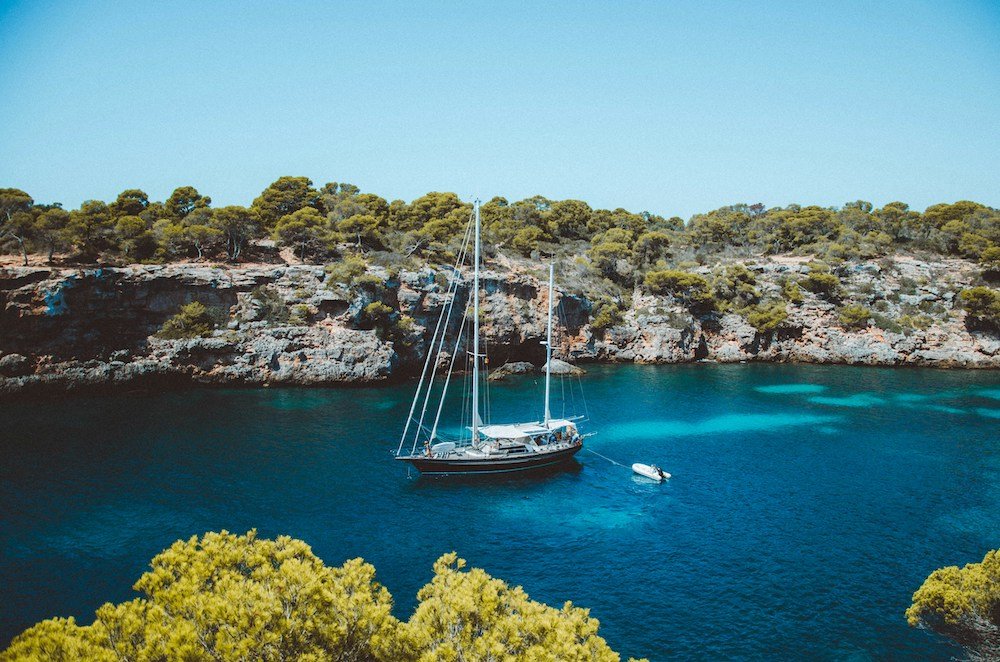
Whether you’re interested in discovering the natural beauty of the Balearic archipelago, diving into the rich history of the region, or simply seeking a change of scenery, there are plenty of options for day trips and excursions from Mallorca.
Recommendations for Day Trips from Mallorca
- Nearby Islands: A visit to the neighboring island of Menorca, known for its pristine beaches and UNESCO-listed Biosphere Reserve, is highly recommended. For a quicker escape, the island of Cabrera, part of the Cabrera Archipelago Maritime-Terrestrial National Park, offers excellent snorkeling and hiking opportunities. Ferries and private charters are available for these trips.
- Hidden Beaches: For those willing to explore, Mallorca itself is dotted with hidden gems. Cala Varques on the east coast is a secluded beach accessible by a short hike, offering crystal-clear waters and a peaceful ambiance. Es Trenc, though more popular, still retains a remote feel with its long stretches of white sand and turquoise waters.
- Historic Towns: Valldemossa, nestled in the Tramuntana mountains, is a picturesque village famous for its Carthusian monastery where Chopin once lived. Another must-visit is the charming town of Sóller, accessible via a vintage train ride through the scenic countryside. Both towns offer a glimpse into Mallorca’s rich cultural heritage and stunning natural beauty.
Organized Tours and Activities
- Boat Tours: Explore the coastline of Mallorca from the sea with organized boat tours. Options range from catamaran cruises with snorkeling stops to sunset sails and private yacht charters.
- Cultural Tours: Take part in guided cultural tours to learn more about the history and traditions of Mallorca. These can include visits to historic sites, wineries for wine tasting, and local farms to sample olive oil and other local products.
- Adventure Activities: For the more adventurous, there are numerous activities to choose from, including cliff jumping, caving adventures, and guided hikes. Many of these tours provide unique ways to experience the natural beauty of Mallorca and its surroundings.
Conclusion
Mallorca, with its diverse landscapes, rich history, and vibrant culture, stands out as a jewel in the Mediterranean.
This guide has traversed the island’s scenic beaches, majestic mountains, and lush natural parks, explored its gastronomic delights, and highlighted the myriad activities that cater to every type of traveler.
From the cultural treasures of Palma to the tranquil beauty of its hidden coves and the adventure awaiting in the Serra de Tramuntana, Mallorca offers an unparalleled travel experience.
But beyond its well-known attractions lies the true essence of Mallorca.
The island beckons you to explore beyond the tourist trails, to discover its small villages, local markets, and artisan studios.
Each corner of Mallorca tells a story, from ancient olive groves to hilltop sanctuaries, offering a glimpse into a way of life that has been shaped by centuries of history and tradition.
Mallorca is not just a destination; it’s an invitation to immerse yourself in beauty, history, and culture. It’s a call to explore, to relax, and to adventure.
Whether you’re basking in the sun on a pristine beach, enjoying a leisurely hike through the mountains, or savoring the flavors of Mallorcan cuisine, you’re part of the island’s ever-unfolding story.

FAQ’s About Mallorca:
What is Mallorca Spain known for?
Mallorca (or Majorca) is renowned for its stunning Mediterranean landscapes, encompassing beautiful sandy beaches, crystal-clear waters, rugged mountains, and charming villages.
It’s the largest of the Balearic Islands and offers a rich cultural heritage, including the historic capital city of Palma, with its impressive cathedral and vibrant art scene.
The island is also celebrated for its delicious cuisine, featuring local specialties such as ensaimada and sobrasada, and its dynamic nightlife, with a wide array of bars and clubs.
Is there a difference between Mallorca and Majorca?
The difference between “Mallorca” and “Majorca” is simply a matter of language.
“Mallorca” is the Spanish and Catalan spelling of the island’s name, reflecting its roots and local use.
“Majorca” is the English adaptation of the name.
Both refer to the same island in the Balearic Islands archipelago but are used differently based on linguistic preference or context.
Is Mallorca a party island?
While Mallorca is known for having vibrant nightlife areas, particularly in Magaluf and Palma, it is much more than just a party island.
The island offers a diverse range of attractions suitable for all ages and interests, including stunning natural landscapes, historic sites, cultural festivals, and family-friendly activities.
The notion of Mallorca as merely a party destination overlooks its richness and diversity as a travel spot.
Why is Mallorca so popular?
Mallorca’s popularity stems from its diverse attractions and the ability to cater to a wide variety of tourist preferences.
Its beautiful beaches, scenic hiking trails, rich history, and vibrant cultural scene make it a versatile destination.
Additionally, its Mediterranean climate, with warm summers and mild winters, makes it an appealing year-round destination.
The combination of natural beauty, historical depth, and modern amenities ensures its place on the travel map.
Is Mallorca expensive?
The cost of visiting Mallorca can vary widely depending on the type of experience you’re seeking.
Like many popular tourist destinations, it can be expensive, especially in peak tourist season and in more upscale areas.
However, with a range of accommodation options, dining choices, and free natural attractions, it is possible to enjoy Mallorca on a budget.
Planning and some local insight can help manage expenses without compromising the quality of the experience.
Where not to stay in Majorca?
Choosing where not to stay in Mallorca depends largely on personal preferences and what you’re looking to get out of your visit.
If you’re seeking a quiet, relaxing holiday, you might want to avoid the bustling party areas like Magaluf, which are known for their lively nightlife.
Similarly, those looking for a more authentic Mallorcan experience might opt for accommodations away from the main tourist strips, exploring the island’s smaller villages and rural areas instead.
Is Mallorca tourist friendly?
Mallorca is highly tourist-friendly, with a well-developed infrastructure catering to visitors from around the world.
The island offers a wide range of services, including multilingual tour guides, international cuisine, and accommodations to suit all budgets.
Local laws and initiatives are in place to ensure the safety and well-being of tourists, making Mallorca a welcoming destination for international visitors.
What is the best month to go to Majorca?
The best month to visit Mallorca depends on your personal preferences.
For beach holidays and warm weather, the summer months of June to August are ideal, though these are also the busiest times.
For those interested in outdoor activities like hiking and cycling, the milder months of April, May, September, and October offer pleasant temperatures and fewer crowds.
Additionally, these shoulder seasons often provide better deals on accommodation and flights.
What are the disadvantages of tourism in Majorca?
The disadvantages of tourism in Mallorca include environmental stress due to over-tourism in peak seasons, which can lead to issues like water shortages, pollution, and damage to natural habitats.
There’s also the risk of cultural dilution, where the authentic Mallorcan way of life becomes overshadowed by the demands and influences of mass tourism.
Economic dependence on tourism can also make the island vulnerable to global economic fluctuations, impacting the livelihoods of locals. Efforts are being made to promote sustainable tourism practices to mitigate these impacts.
